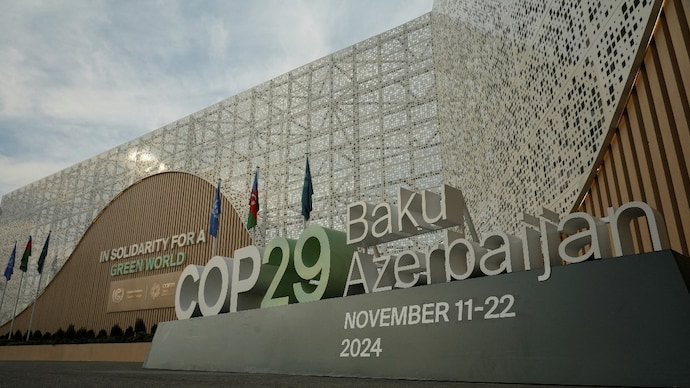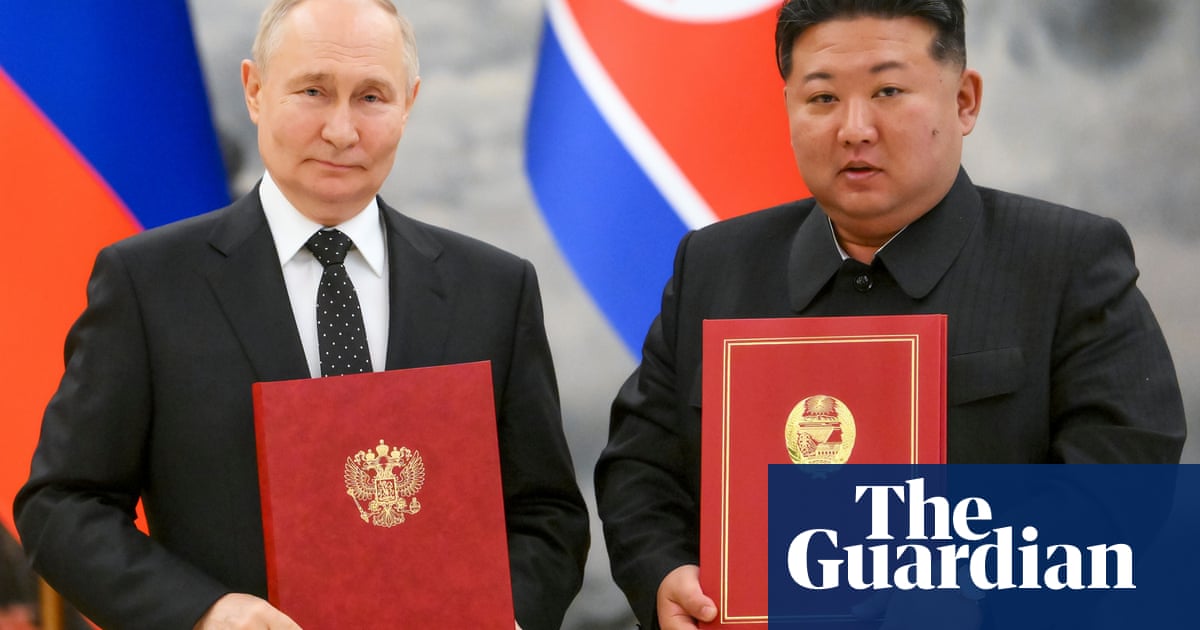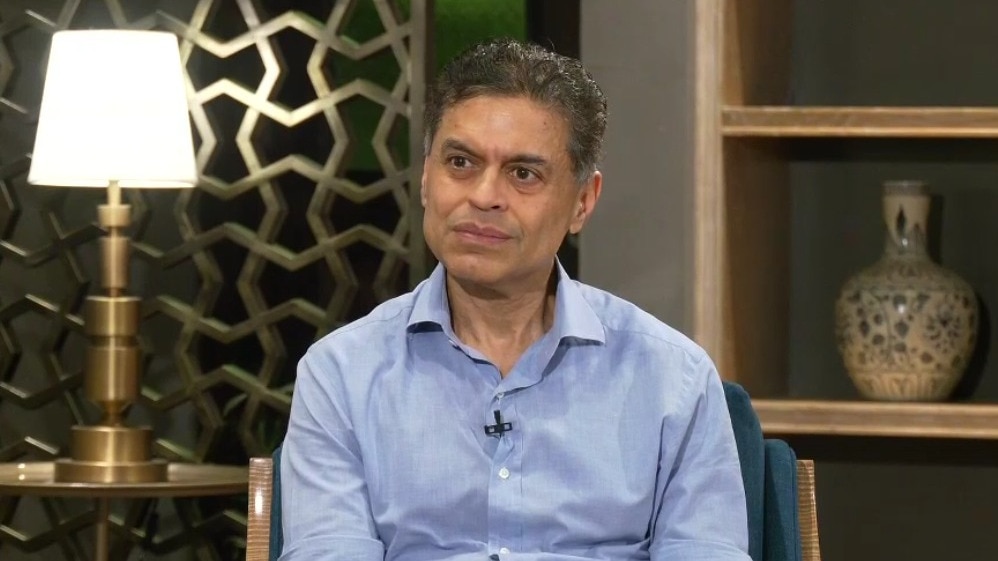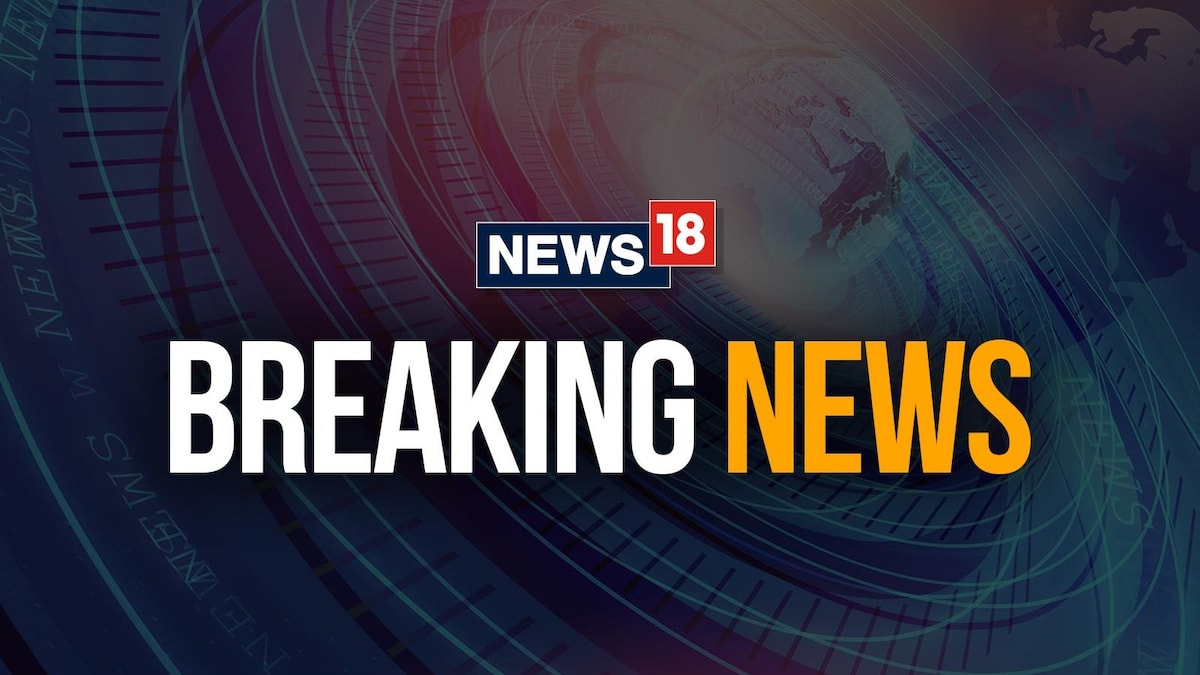A broader classification may very well be states and groups who are largely responsible for a majority of climate disasters and the consequent loss and damage on one hand, and states who suffer the real impact of these disasters, often without the means for mitigation on the other.

These commitments align with the global stocktake call for rapid, deep, and sustained GHG reductions. (Photo: Reuters)
With the 29th session of the conference of parties under the UNFCCC underway in Baku, Azerbaijan, let’s take a look at important players at the platform. This includes states, as well as regional groups and special climate related alliances.
A broader classification may very well be states and groups who are largely responsible for a majority of climate disasters and the consequent loss and damage on one hand, and states who suffer the real impact of these disasters, often without the means for mitigation on the other.
China and its developing concerns
China and the U.S. are the top two greenhouse gas emitters – China is at the top at present, and while U.S. is a close second, it is the highest historical emitter. In 2023, China accounted for about 30% of global annual carbon emissions, while the U.S. contributed almost 13 percent.
While China is on an easy course to meet its 2030 climate targets, reports suggest that policy inertia has led Chinese policymakers to lowball their 2035 targets. The country has also not disclosed their NDCs or nationally determined contributions. Moreover, China is represented by a new envoy at the COP this year. Liu Zhenmin – who has a long history of experience in climate diplomacy – was appointed as the country’s new special envoy for climate change after the veteran representative Xie Zhenmin retired.
Despite being the second largest economy in the world, China is still considered a developing country by the UN, and it has already rejected the summit’s draft text on new climate financial goal on grounds that it does not reflect the suggestions made by developing countries.
On day 1 of COP29, Ding Xuexiang, China’s vice Premier said that, "developed countries need to increase climate, ambition and action, take the lead in fulfilling emission reduction obligations, and move up to a timeline for carbon neutrality. Developing countries also need to do our best within our capabilities. The Chinese side will also meet its 2035 nationally determined contributions that are economy wide and to cover all greenhouse gases in the drive to achieve carbon neutrality before 2060." The country is also expected to oppose carbon border taxes and other trade measures it considers restrictive and harmful for developing economies.
United States and Trump presidency
The United States has seen a major upheaval in its climate position with the re-election of Donald Trump earlier this month. While the Biden administration has made significant contributions to climate change mitigation, the coming of Trump – with his blatant dismissal of climate change, threats to exit the Paris Agreement, and promises to boost oil production in the US during his presidential campaign – does not bring good tidings for the summit.
In his statement at COP29, U.S. climate envoy John Podesta expressed concern about the incoming president. He said, "in January, we're going to inaugurate a president whose relationship to
climate change is captured by the words 'hoax' and 'fossil fuels'. He's vowed to dismantle our environmental safeguards and once again withdraw the United States from the Paris Agreement. That is what he has said, and we should believe him." While he was concerned about a reversal of U.S. efforts towards climate action, Podesta announced that “the work to contain climate change is going to continue in the United States with commitment and passion and belief."
However, COP leadership through the UNFCCC executive secretary, Simon Stiell maintained that climate action will continue to function in a robust manner despite the impending Trump presidency.
United Kingdom: back in the business of climate leadership
The United Kingdom, with its new Labour Party government, according to its Energy Minister Ed Miliband, “is back in the business of climate leadership”. UK PM Keir Starmer also committed to the same and said that “we are here because I see this not only as one of the most important challenges we face globally, but one of the most important opportunities. And that is why I was very pleased to announce from here, from COP that £1 billion into jobs, which will be in Hull.” He also announced that UK will reduce all greenhouse gas emissions by at least 81% on 1990 levels by 2035.
PM Starmer also highlighted the need for international cooperation and urged all parties to come forward with ambitious targets of their own. However, domestic political pressure due to a ballooning national debt, as well as stagnating economic growth raises concerns about UK’s ability to make good on its promises.
Regional groups and alliances
There are also important regional groupings and alliances. First of these is the European Union. With its 27 member nations, the EU is the highest contributor to global climate finance. In 2023 alone, it contributed 28.6 billion euros 30.8 billion dollars. Since European Commission President Ursula von der Leyen was absent, Charles Michel, the EU Council President addressed the COP to announce its contributions and highlight the responsibility of developed countries. He reiterated the group’s support and declared financing to the tune of $31 billion, and called on everyone else to follow their example.
Next is the G77 – the largest bloc at the summit – and the largest intergovernmental organisation of developing countries in the United Nations with 134 members. Along with China, G77 has rejected the COP draft on new climate finance goals. The bloc reiterates the principle of CDR, which is taken up even more seriously by the BASIC group of countries which include fast-developing economies of Brazil, South Africa, India, and China.
At the other extreme of representation at the summit are the Least Developed Country Group and the African Group of Negotiators. The first has 45 countries which are at serious risk of climate related loss and damage, without having contributed to it. These nations are rallying to convince developed countries to increase funding through grants, as well as in the loss and damage fund.
Like the LDC group, the African Group has similar climate finance related issues on its agenda, along with specific concerns about the decision to place the fund’s technical assistance body in the high-cost city of Geneva, rejecting recommendations for Nairobi. The group will also work proactively on getting Article 6 of the Paris Agreement which deals with carbon market rules enforced by early next year.
An Alliance of Small Island States is a group of powerful but disproportionately affected states, especially due to rise in sea levels. Headquartered in New York, the alliance has 44 member states, and 5 observers from the Atlantic, Indian, and Pacific ocean and the Caribbean. The AOSIS will
also be looking at increasing states’ contributions to climate finance, as well phasing out of fossil fuels.
There is also the 118-member High Ambition Coalition founded by the Marshall Islands in 2015, and currently co-chaired by Costa Rica and France, which is pushing for more ambitious emission-cutting targets and policies. Joining them is the Troika – which includes the hosts of COP28, 29, and 30 – the U.A.E., Azerbaijan, and Brazil respectively, which all have heavily fossil fuel and natural gas reliant economies.
What to expect?
The coming days will be important to see which groups are able to get their voices heard, their concerns considered, and actions taken, and which ones will not have much to show for their efforts. Expectations from the summit include a balanced approach which takes all perspectives into consideration, through the unbiased lens of the need for urgent climate action.
Published By:
indiatodayglobal
Published On:
Nov 22, 2024

 5 hours ago
5 hours ago


















